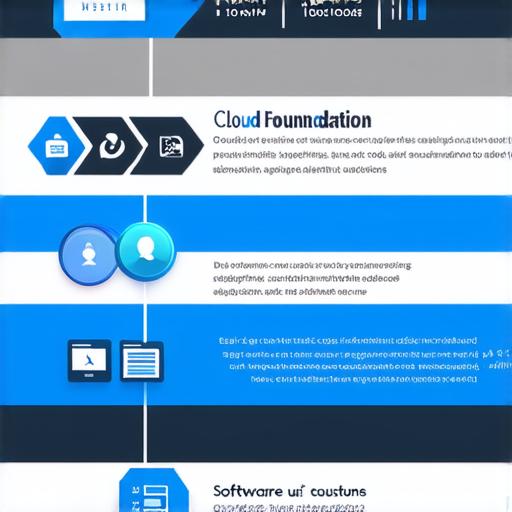
As software developers, we often come across platforms and software interchangeably in our daily work. However, it’s essential to understand the distinction between them, as they have different characteristics and capabilities.
1. Definition of Platform
A platform is a set of tools, technologies, and services that enable users to create and run applications, websites, or services on top of it. A platform provides a framework for developers to build upon, using pre-existing components, libraries, and APIs (Application Programming Interfaces). Examples of platforms include WordPress, Shopify, Magento, and Salesforce.
1. Definition of Software
On the other hand, software is a program or application designed to perform specific tasks or functions for its users. It runs on a computer, server, or mobile device and can be installed locally or remotely.
1. Functionality of Platforms
Platforms are designed to provide developers with a set of tools, technologies, and services that simplify the development process. They allow developers to focus on building the unique features and functionalities of their application instead of developing the underlying infrastructure and technology stack. Platforms typically include the following functionalities:
-
User Interface: A platform provides pre-built user interfaces, such as templates or themes, that developers can customize to fit their needs.
-
Application Frameworks: Platforms come with pre-built application frameworks that simplify the development process by providing a set of pre-built components and libraries that can be used to build applications quickly and efficiently.
-
APIs and Web Services: Platforms provide access to APIs and web services, which allow developers to connect their application with other systems and services.
-
Database Integration: Platforms usually come with pre-built database integration, which makes it easier for developers to store and retrieve data from their application.
1. Functionality of Software
Software is designed to perform specific tasks or functions for its users. It can range from simple desktop applications like Microsoft Word or Adobe Photoshop to complex enterprise systems like SAP or Oracle. The functionalities of software are as follows:
-
Task Automation: Software automates repetitive tasks, such as data entry or report generation, freeing up time for more important activities.
-
Data Management: Software enables users to store, manage, and analyze data in various formats, such as spreadsheets or databases.
-
Collaboration: Software facilitates collaboration among team members by providing shared workspaces, document management, and communication tools.
-
Process Optimization: Software optimizes business processes by automating workflows, reducing errors, and increasing efficiency.
1. Examples of Platforms and Software
Let’s take a look at some examples of platforms and software to understand how they work and what they do:
Platforms
-
WordPress: A popular content management system (CMS) that allows users to build websites, blogs, and online stores using pre-built templates, themes, and plugins.
-
Shopify: An e-commerce platform that enables users to build online stores, manage inventory, process payments, and ship orders.
-
Magento: A powerful e-commerce platform that provides advanced features for managing products, customers, orders, and shipping.
-
Salesforce: A customer relationship management (CRM) platform that helps businesses manage sales, marketing, customer service, and analytics.
Software
-
* Microsoft Word: A word processing software used for creating documents, reports, and presentations.
-
Adobe Photoshop: An image editing software used for creating and manipulating images, videos, and designs.
-
SAP: A comprehensive enterprise resource planning (ERP) software used for managing finance, human resources, and supply chain management.
-
Oracle: A suite of business applications used for managing finance, human resources, supply chain management, and customer relationship management.
1. Advantages and Disadvantages of Platforms and Software
Let’s compare the advantages and disadvantages of platforms and software to help you understand their strengths and weaknesses:
Advantages of Platforms
-
* Simplifies development process
-
* Provides pre-built components and libraries
-
* Enables faster deployment and scalability
-
* Reduces development costs
Disadvantages of Platforms
-
Limited customization options
-
Dependence on third-party providers
-
Higher subscription or licensing fees
-
Security risks associated with integrating multiple systems
Advantages of Software
-
* Provides advanced features and functionality
-
* Highly customizable to fit specific business needs
-
* Increases efficiency and productivity
-
* Reduces errors and improves accuracy
Disadvantages of Software
-
Requires significant development effort
-
High initial cost
-
May require specialized skills and training
-
Higher maintenance and support costs
1. Case Study: Uber vs. Lyft
Let’s take a look at Uber and Lyft, two ride-hailing platforms that have disrupted the transportation industry.
Uber is a platform that connects riders with drivers using a smartphone app. It provides a pre-built infrastructure, including payment processing, driver matching, and real-time tracking, which simplifies the development process for both riders and drivers. Uber charges a commission on each ride, which covers its costs and generates revenue.
Lyft is another ride-hailing platform that uses a similar model but provides a few unique features, such as carpooling and driver ratings. Lyft also charges a commission on each ride, but it offers more flexible pricing options for drivers and riders.
Both Uber and Lyft have faced regulatory challenges and legal disputes, which highlights the risks associated with using platforms in highly regulated industries. However, their success has shown that platforms can be an effective way to disrupt traditional business models and create new revenue streams.
1. Personal Experience: Building a Mobile App
As a software developer, I have worked on building several mobile apps using both platforms and software.
While both approaches have their advantages and disadvantages, I find that using platforms can be beneficial for projects with tight deadlines or limited resources. Platforms provide pre-built tools and frameworks that can help developers save time and reduce costs. However, if a project requires specific customization or advanced features, software development may be the better choice.
In my experience, using a combination of platforms and software can lead to the most successful outcomes for projects. By leveraging the strengths of both approaches, developers can create efficient, user-friendly applications that meet the needs of their users while staying within budget and timeline constraints.
